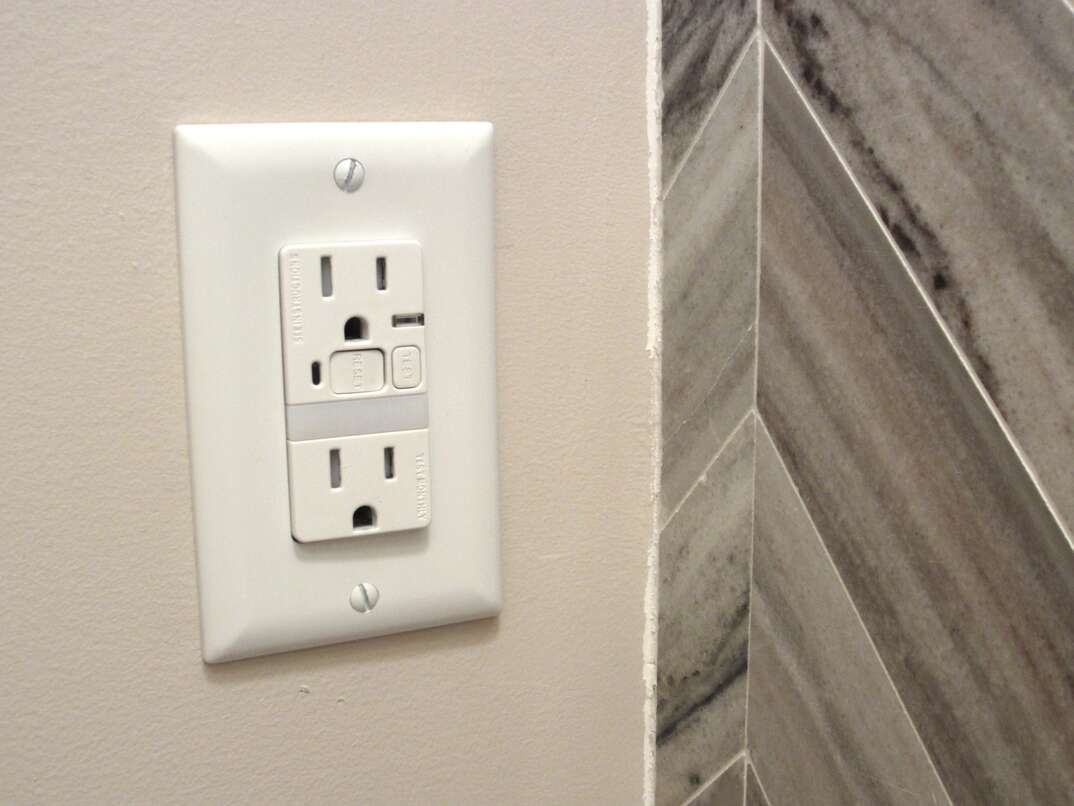- AppliancesElectriciansHVACLandscapingLocksmithPest ControlPlumbingRenovationRoofingT V RepairAll Home Improvement
- Car AccidentClass ActionCorporate LawCriminal DefenseDivorce LawEmployment LawFamily LawFinancial LawLegal AidMedical Injury LawyersMedical MalpracticeReal Estate LawWater Fire RestorationAll Legal
- InvestmentRetirementAll Finance
- Animal InsuranceAutoGeneral InsuranceHealth PolicyHome RentersAll Insurance
- DentalHealth SpecialistsAll Medical
- Animal CareVeterinaryAll Pets
- Auto GlassTowingAll Automotive
What Are the Different Kinds of Outlets?

Outlets seem simple, but they’re not all created equally. Certain types are ideal for specific situations and can improve your safety or add convenience.
There are a lot of things that differentiate the types of outlets — from amperage and voltage to the kinds of plugs they’re able to accept. Explore the types of outlets to help you decide on upgrades.
Your home likely has a variety of outlets in it already. Some might work fine, while others could benefit from an upgrade to something safer or more convenient. The following list explains the different kinds of outlets.
1. 15-Amp, 120-Volt
Many standard outlets in a home are 15-amp, 120-volt outlets. They accept electrical plugs from everyday household items. You'll find these outlets in two-prong and three-prong versions. The three-prong version features an extra hole for the ground pin found on many newer electronics and is a safer option. You can find this type of outlet throughout the home. They're ideal for regular, light use.
Designed to handle a higher amount of power, these specialty plugs are typically used for heavier-duty items, such as kitchen appliances. They come in 125-volt and 250-volt versions, depending on how much power you need. The plug configuration is different than standard outlets, so you can only plug in an appliance that uses the larger flow of electricity. You'll often find them by kitchen and laundry room appliances.
3. GFCI
A ground fault circuit interrupter (GFCI) outlet is made to cut off the power flow when there's a spike in the current to protect against power surges. It has two buttons, a test and reset button, and the buttons are in different colors, making them easy to recognize. These outlets protect against electrical shock if a plugged-in item comes into contact with water, so they're typically found in kitchens and bathrooms. You might also use them in basements, laundry areas or outdoors.
4. AFCI
An arc fault circuit interrupter (AFCI) outlet adds a layer of protection if your wiring experiences an arc fault, which means electricity jumps between connections along an unintended path. Damaged wires, such as those that have been chewed by rodents or pierced by nails, can cause arching, which results in a lot of heat and could cause a fire.
Whatever the reason for the arc fault, an AFCI outlet shuts down if it senses arcing. These outlets work well in any room since they can prevent electrical fires, but they can be particularly beneficial in main living areas or in bedrooms to prevent fires while you sleep.
5. Ungrounded
If you see an outlet with just two vertical slots, you're looking at an ungrounded outlet. The two slots offer connections for hot and neutral wires but lack the ground wire that offers extra protection. If the current becomes unstable, there's no safe place for it to go, which means ungrounded outlets come with a higher risk of electrical shocks and electrical fires. They could also damage whatever you have plugged into them. Ungrounded outlets aren't a safe option for any use for that reason. Having an electrician replace them with grounded outlets can improve the safety of your home.
More Related Articles
- How Do I Tell If an Electrical Issue Is Serious?
- Can One Bad Outlet Affect Others?
- How to Reset a GFCI Outlet
- What’s in My Electrician’s Van?
- 7 Ways to Save on Your Electric Bill
6. USB
These outlets provide easy access to USB outlets right on the wall plate. You can plug your charging cord directly into the socket without a bulky charging box that takes up a regular spot in the outlet. USB outlets often combine the smaller USB openings with regular electrical outlet spots, so you can plug more into a single outlet. They work well in living rooms, bedrooms near your bed, home offices and other places where you frequently charge your devices.
7. Combination
Combination outlets combine two different functions, often a switch and a receptacle. They work like individual outlets and switches, but they share the same opening and have a single plate around them. This is a space-saving option.
8. Smart
Smart outlets can help monitor your electric use and shut on and off based on a schedule. For example, you might plug your coffee maker into a smart outlet and program it to turn on in the morning just before you wake up. If you're going on vacation, you could plug a lamp into a smart outlet and control it while you're gone to turn it on and off at varying times. Consider these outlets in areas where you might want to have remote access to the power flow at the outlet.
Elocal Editorial Content is for educational and entertainment purposes only. Editorial Content should not be used as a substitute for advice from a licensed professional in your state reviewing your issue. Systems, equipment, issues and circumstances vary. Follow the manufacturer's safety precautions. The opinions, beliefs and viewpoints expressed by the eLocal Editorial Team and other third-party content providers do not necessarily reflect the opinions, beliefs and viewpoints of eLocal or its affiliate companies. Use of the Blog is subject to the
Website Terms and Conditions.The eLocal Editorial Team operates independently of eLocal USA's marketing and sales decisions.



